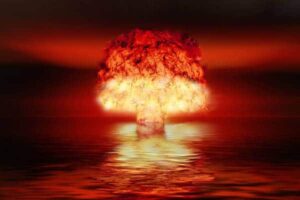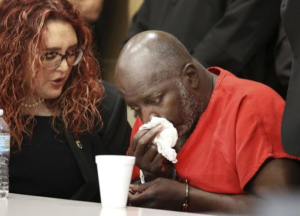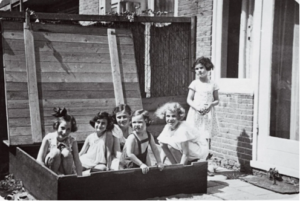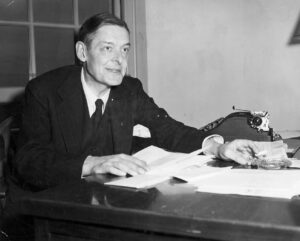We were traveling this last week…
Four days in LA visiting the grandkids, and three days in Richmond getting to know a city we’ve never been to. Here are some impressions:
Glendale, LA
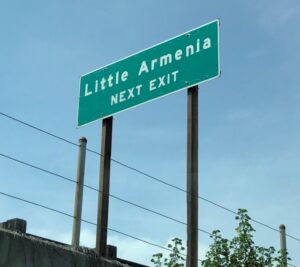
When in LA, K and I often stay at the Glenmark Hotel in Glendale. It’s about equidistant between the homes of Number One and Number Two sons.
The Glenmark is a clean but otherwise unremarkable hotel, except for the rooftop garden, which has a great view and allows smoking – cigarettes, cigars, and hookahs. The hookahs are the most common smoking device here, perhaps because the Glenmark is smack dab in the middle of Little Armenia, one of the largest Armenian communities outside of Armenia.
When we first stayed here, I knew nothing about Glendale and almost nothing about Armenians, except that they were nearly exterminated during World War I. (Turkey was trying to turn Armenia into an Islamic state by murdering more than a million Armenians.)
Every time I’ve been here since, I’ve done a bit more reading about Armenia’s history and culture. I’ve learned that it is a smallish country (about 3 million people) that lies in the Caucasus Mountains on the Asian side of the border between Asia and Europe. It has a long history, dating back more than 2,000 years, and was one of the earliest Christian civilizations.
Armenia was a republic of the Soviet Union until 1991, when the Soviet Union broke up and Armenia achieved its independence. Since then, from what I’ve read, Armenia has tried to maintain good political and trade relations with both Russia and the United States. That’s never been easy, and it’s especially difficult now because of the war.
In addition to my reading, whenever I have a chance, I have conversations with the locals in Little Armenia and try to understand what they think of their history and culture and how it is for them to live abroad in communities like this one.
Those conversations have left me with a very positive impression of Armenians – or at least Armenians living in LA. Those I’ve spoken to don’t complain about their terrible history. They’re much more likely to talk about how happy they are to be in the US and their optimism for the future.
They are generally patriotic to America, but also very much attached to their fatherland. They don’t see a contradiction in that. (And neither do I.)
They are initially reserved when interacting with strangers, but become friendly quickly when they are spoken to with courtesy and respect. From what I can see, they have the warmth of the Italians, the pride of the Spanish, and the temperament of the Greeks. They look a lot like the Greeks, too – handsome, with strong facial features, olive skin, dark brown eyes, and black hair.
Altogether, they seem like admirable people. They have built a community in Glendale that is safe, family-oriented, welcoming, economically bourgeoning, and culturally rich. They seem to have blended into an LA version of American culture, without giving up their own.
Richmond, VA
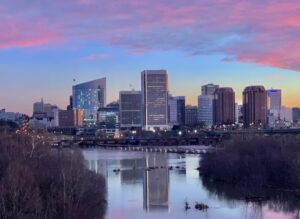
Instead of flying directly back to Delray Beach, K and I thought we should spend a few days somewhere else – somewhere we’ve never been. From LA, there were a half-dozen cities that could be reached reasonably by plane. Richmond was the one we chose.
Richmond is historically important. It was the last city to fall to the Union Army in the Civil War. And it has embraced its history, the good and bad, with what is, in this time, a refreshing mix of candor, compassion, and pride.
Richmond reminds me of Baltimore in that it is a once-rich city that has fallen into bad economic times. Walking down Broad Street was like walking down some stretches of Charles Street in Baltimore, but worse. At least half of the storefronts are boarded up. And most of the other half are occupied by government offices and businesses that look dreary and near broke. It’s sad.
And yet, there a fair number of good and enjoyable things to see and do in Richmond. These were our favorites:
* Hollywood Cemetery
Thousands of fun-to-read tombstones dating back hundreds of years on 140 acres of rolling green hills, populated with giant magnolias, white oaks, and myrtle overlooking the James River. The most beautiful cemetery I’ve ever seen.
* Virginia Museum of Fine Art (VMFA)
K and I were surprised by the size of the building and the quality of the several collections that comprise the museum’s permanent collection. This is not a regional museum. It doesn’t offer the breadth or the depth of the Met or the Louvre. But it has a half-dozen collections that are as good as any.
* Civil War Museum
Lots of interesting facts and relics from our country’s most deadly war. But the highlight for us was the film you can see upon entering the museum. It made me want to watch Shenandoah, which I’d never seen before.
* Louis Ginter Botanical Gardens
50 acres with over a dozen themed gardens, including a Rose Garden, Children’s Garden, Fountain Garden, Asian Garden, Victorian Garden, Woodland Garden, Healing Garden, Perennial Garden, Edible Display Garden, Community Kitchen Garden, as well as a conservatory, library, and café.
But what I most enjoyed about Richmond, and I don’t think I’m making this up, is how warm and courteous everyone seems to be. Another thing I couldn’t help but notice: Racial relations seem to be better, or at least more cordial, than they are in other cities I know. There is definitely more casual smiling and eye-to-eye contact.
Obviously, I might be deluding myself. Is there something special about Richmond? Is it a Southern thing? If you know Richmond, let me know..


